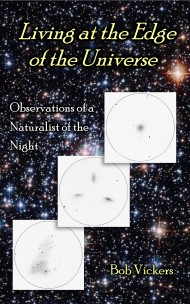Early last month, Melissa and I made a day of it at the Land Between the Lakes. Since the bridge is out at Aurora, we drove over in the morning via the Paris Landing Bridge, through Dover, and up the Trace. On our way up to Golden Pond where we planned to help with some work on the observatory dome, we passed by the Bison Range across from the Homeplace (an 1850’s living history farm). There was a herd of about twenty-seven bison in a large fenced-in area. These impressively huge animals can weigh more than 2,000 pounds and stand up to six feet high at the shoulders.
It’s hard to imagine they once ranged from the Rocky Mountains to the Appalachians and numbered in the tens of millions. After a short walk along the side of the range, Melissa and I ate lunch in our parked car while watching the bison, and then drove on to the observatory at Golden Pond.
We went in to see Ross Workman, the new Planetarium Director and a little later John Holland and Alan Dudenhofer arrived. John, Alan, and I set about to fix the broken wheel on the observatory shutter which didn’t take long. After we finished with the dome, Ross showed us some short show trailers in the planetarium with the new system they had just installed. It was really impressive. The “all dome” digital projector made you feel like you were in the movie. Melissa and I stayed on into the evening at the observatory where I re-familiarized myself with the telescope operation. The scope still needs some work to get it aligned properly but I managed to manually find the Moon, Venus, Jupiter, the Polaris double, and the Orion Nebula with the Trapezium. I could even glimpse one of the dimmer component stars in the Trapezium.
At that point Melissa and I decided that it had been a fun day but it was time to go home. Driving back I couldn’t help but think about that small herd of bison here at LBL. It reminded me of a much earlier time in our country’s history when the night skies here were truly dark and not degraded by light pollution. The fate of the bison seems to have an uncomfortable parallel with the fate of our dark and starry nights. But, bison appear to be making a comeback in many parts of the country where new herds are being introduced. Obviously, we can never go back to the mid 1800’s but maybe, with careful and thoughtful management, we can achieve a level of sustainability that will assure the bison’s future. And, if we can do it with the bison, why can’t that same thoughtful management be applied to light pollution to preserve our heritage of starry nights?
Oh, give me a home where the buffalo roam
Where the deer and the antelope play
Where seldom is heard a discouraging word
And the skies are not cloudy all day
…
How often at night where the heavens are bright
With the light of the glittering stars
Have I stood there amazed and asked as I gazed
If their glory exceeds that of ours
Home on the Range
From the poem “My Western Home” by Dr. Brewster M. Higley (1823–1911)


